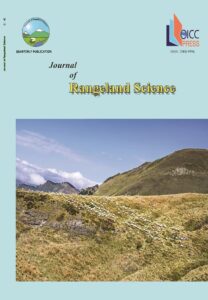Investigation of Feasibility and Effect of Alternative Farming System on the Grain Yield of Barley and Forage Production in Western Semi-arid Region of Golestan Province, Iran
Authors
- Armin Arrekhi * 1
- Hamid Niknahad Gharmakher 2
-
Sonoko Bellingrath-Kimura
 3
3
- Johann Bachinger 1
-
Ralf Bloch
 4
4
Abstract
One of the major challenges in semi-arid regions of Iran is to supply the adequate forage for livestock and meanwhile prevent the destruction of rangelands due to overgrazing. Therefore, this study aimed to compare three cropping systems of barley using Salsola turcomanica (ST), and Chrysopogon zizanioides (CZ) in three treatments of barley+ST, barley+ST+CZ and mono-culture of barley. Two-year field trials data were collected from November 2018 to October 2020 in two experimental sites using a Randomized Complete Block Design (RCBD) with four replications. The results of analysis of variance over two years indicated that the effects of year, location, and year by location interaction were significant (p<0.01) for all of barley’s yield components. Mixed cropping of barley with other species had no negative effect on barley traits such as grain yield, straw yield and harvest index. In addition, the mixed cropping of barley+ST and barley+ST+CZ in the first year produced 2.5 t/ha more forage yield than that mono-culture of barley. This was due to high production of Salsola (ST), in mixed cropping. In both years, yield of Salsola production was about 25% of whole produced biomass. Drastic reduction in rainfall in the second year reduced the obtained yield; so, there was no significant difference among three cropping systems in the second year. However, cropping systems of barley+ST and barley+ST+CZ produced about 1 t/ha more forage than that for the mono-culture of barley. Mixed cropping of barley +ST+CZ did not affect yield components of barley. Mixed cropping of barley with Salsola turcomanica could guarantee soil cover throughout the year and is recommended for forage production in rangeland in Iran.



